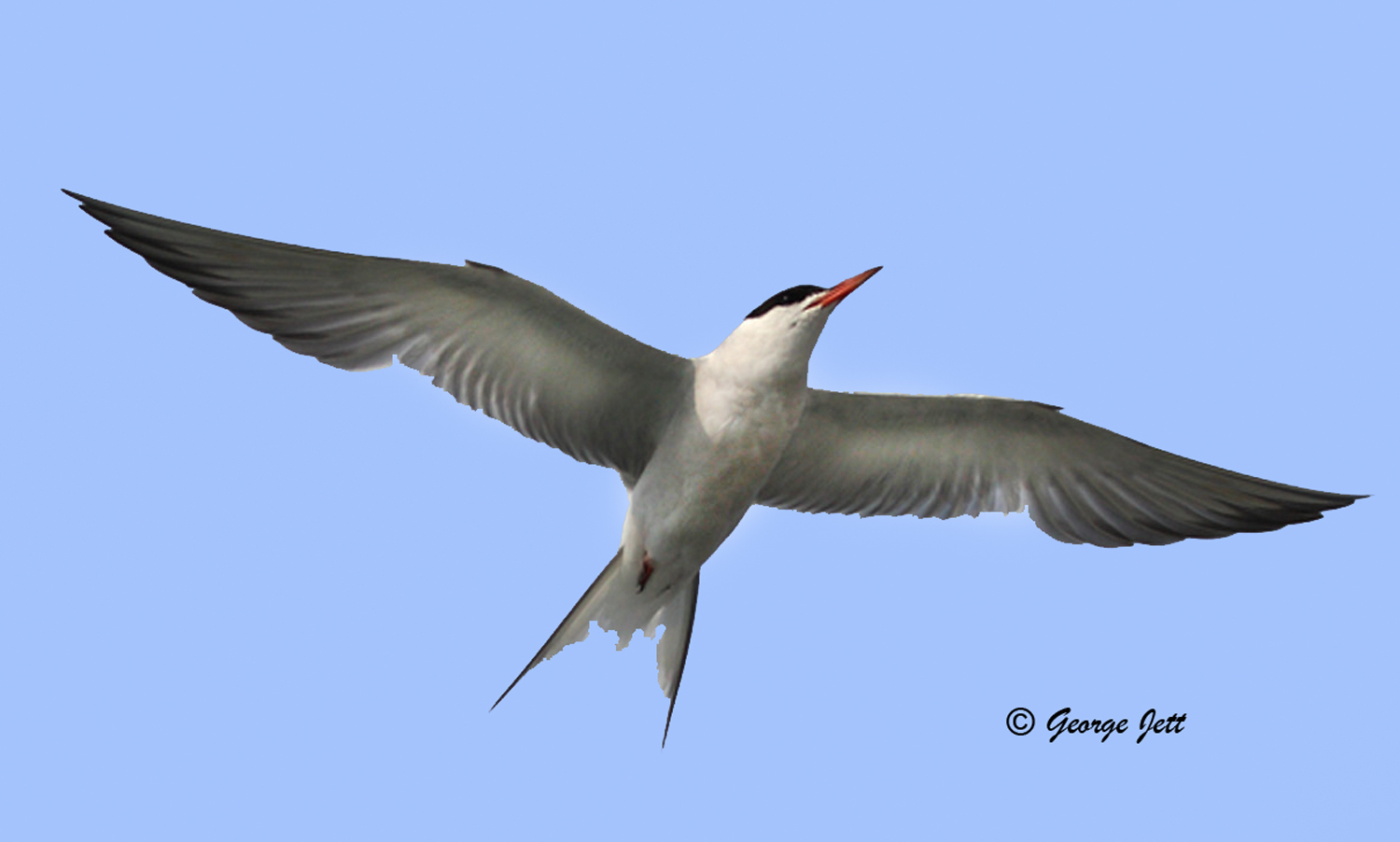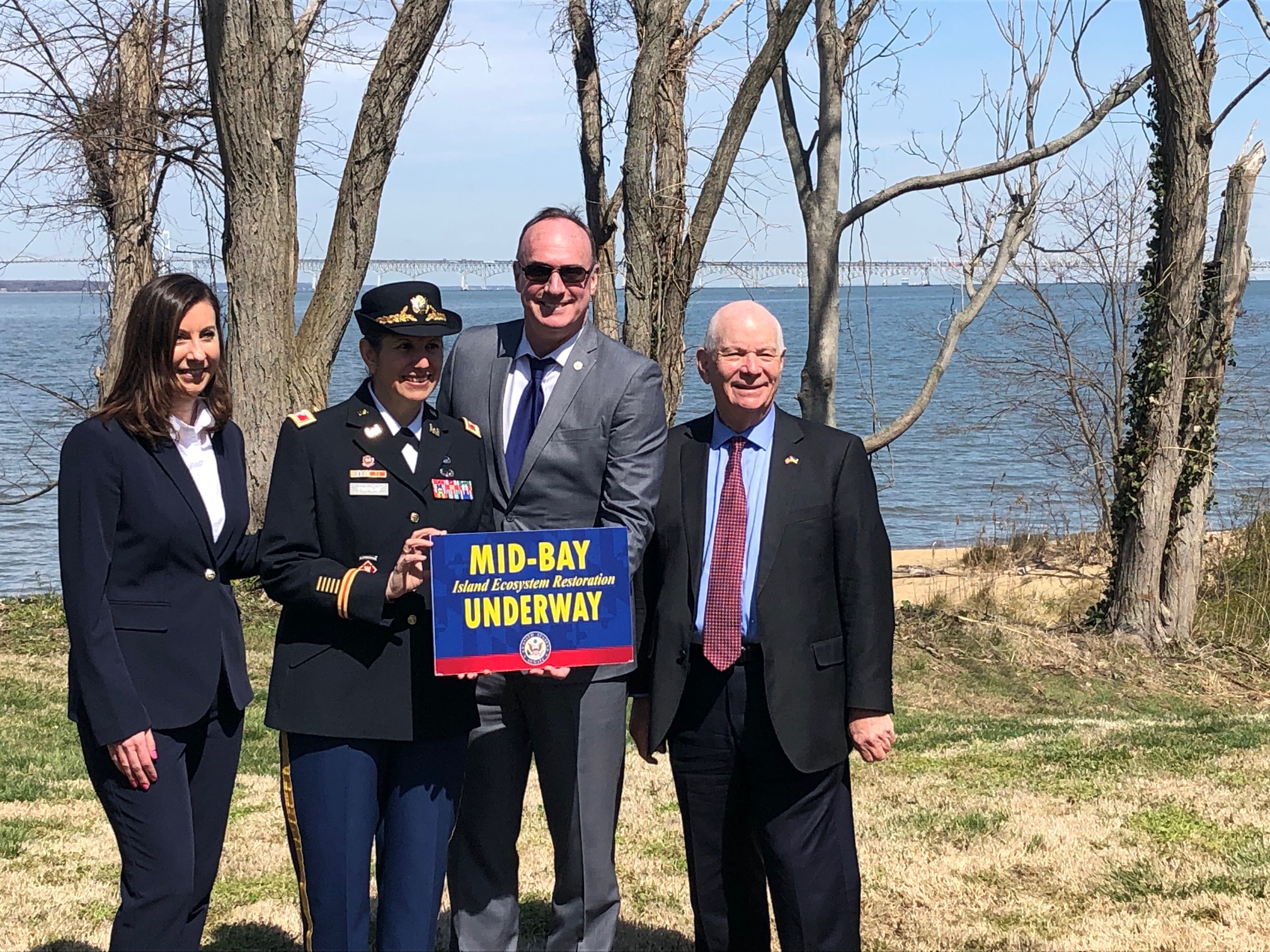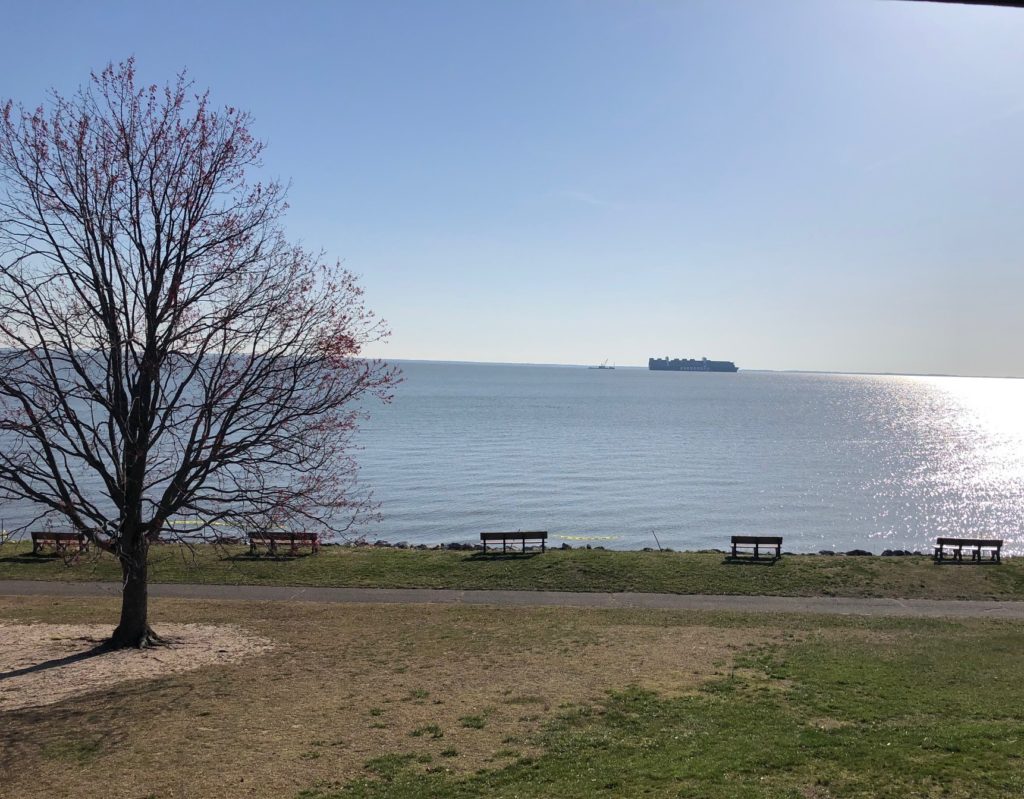Back From the Brink



Stuck ship benefits Poplar Island restoration
By Pat Piper
It’s been a long three-plus weeks for anyone connected with the container ship Ever Forward that ran aground off Gibson Island on March 13. And now, it’s going to be even longer.
The U.S. Coast Guard, the Army Corps of Engineers and the Port of Baltimore, began dredging on March 20 to get the almost 1,100-foot ship floating again. After dredging around the ship from the Chesapeake Bay bottom and pulling the ship with numerous tugboats with no success, there’s a new plan. Later this week, a pair of barge cranes will be brought alongside the ship and begin removing the 5,000 containers to lighten the weight on board. Then, it can be moved to deeper water. The heavy containers (each is a few tons when empty) will return to Baltimore’s Seagirt Marine Terminal. It may take a few weeks but once done, Ever Forward’s next stop will be Norfolk, about 170 miles away.
Bad Situation Turns Good
Monday, when this new approach was announced, a group of federal, state and local officials gathered in Stevensville to cheer how dredging has helped free Chesapeake Bay islands from erosion caused by a combination of weather, climate change and high-water levels.
In November, these same officials had met to fine-tune an idea that became part of the Infrastructure Jobs Act, signed by President Biden. In that $1 trillion plan, $14 billion went to the Army Corps of Engineers, which designated $37.5 million for the Mid-Bay Island Ecosystem Restoration Project to use dredged material from Baltimore channels and the Chesapeake and Delaware Canal for enlarging wildlife habitats on the Eastern Shore’s James and Barren Islands. They announced an additional $46.5 million was designated for the Mid-Bay project.
The idea was an easy sell to Congress because the process had already saved other islands.
In 1998, dredged material from channels around the Port of Baltimore began going to Poplar Island, a small 4-acre parcel just offshore from Talbot County’s Tilghman Island. Formally named the Paul S. Sarbanes Ecosystem Restoration Project at Poplar Island, the project site has become an international model for the beneficial use of dredged material. Today, it has been brought back to its original size of 1,150 acres, with four new wetland areas and a new location with higher ground. It’s a template that’s going places. Literally.
Among those in Stevensville was U.S. Senator Ben Cardin (D-MD). After the brief celebration promoting Mid-Way Underway, he looked at the cargo ship anchored just south of the Bay Bridge waiting for a space in Baltimore and noted, “It’s benefiting other sites around the United States and around the world–what we did at Poplar Island. We’ve had interest from many countries to take a look at this but it’s also giving us the opportunity to move toward a national policy on beneficial use of dredge material.”
Bigger boats will require more dredging in the future, which could provide more restoration material for other eroding Chesapeake islands.
The largest container ship in the world is the Ever Ace (also owned by Evergreen Marine Co.) with a length of 1,312 feet. While bigger may be better, using a larger ship requires deeper shipping channels and specialized equipment in ports.
Maritime history professor Salvatore Mercogliano has been looking at the big picture: “The issue at play with Ever Forward is the growth of vessels caused by the increased demand and the failure to properly invest in the technology and infrastructure needed to support them. While we have dredged channels, both ship-to-shore cranes and developed terminals to handle them, we’ve not invested in larger tugs, fully funded dredging of additional areas, or in proper salvage vessels.” (Mercogliano also hosts the popular YouTube “What’s Going on With Shipping?”)
Port of Baltimore’s Executive Director William Doyle agrees. “There was a time we just towed the dredge out to sea and dumped it. Today, Dutch, Belgium and European officials are looking at what was done on Poplar.”
Dredging around the Ever Forward has scooped up 151,470 cubic yards of sediment, reported the U.S. Coast Guard in Baltimore. Every bit of it is being sent to Poplar Island.
Then and Now
Once a populated community, Poplar Island was used as a base by the British during the War of 1812. Presidents Franklin Roosevelt and Harry Truman used the island as a retreat in the ‘30s and ‘40s. But then the water started rising and the island began to disappear.
Now it’s home or a migratory stopover for thousands of birds. Dozens of species have discovered this isolated island. Area schoolchildren raise terrapins to release on the island. Somehow, a small herd of deer now lives on the island. And wildlife lovers flock to its shores.
Jan Reese was born on Tilghman Island and had a daily view of the land just offshore. Inspired by what he saw, Reese joined the Poplar Island Environmental Restoration Project where he authored scientific journals about birds seen during visits to the island. “I witnessed the rebirth of an island lost to erosion. It had no or very limited natural habitat so any birds arriving were primarily transients attracted to a terrestrial-predator-free environment for resting, though some nested there.”
George Jett has traveled the world taking images of birds but marvels at what can be found on the restored island. “Birds now have a habitat on Poplar,” he says. “We have long-distance migrants like the Baird’s sandpiper that moves between the high arctic and South America. We see lesser yellowlegs, too. Poplar Island provides a staging location to stop, feed, rest and move on to the nesting or wintering locations, depending on the time of year.”
This summer, the Maryland Environmental Service will conduct public tours of Poplar Island. It should be noted the island remains a federal construction site and requires prior authorization for visits.
The U.S. Coast Guard has not commented on why the ship failed to turn starboard in the Craighill Channel. But for those working with the Poplar Island project, it’s now a source of unexpected growth. There was unanimous agreement from everyone at Monday’s Mid-Bay meeting: There’s now a real respect for dredging.

Attendance Boost
Park rangers at Downs Park in Pasadena have seen an increase in visitors to the waterfront venue. While the boat ramp and fishing pier and trails and bike paths are used daily, a new crowd is there for a view. Just offshore is the Ever Forward.
Colleen Joseph of Anne Arundel Parks and Recreation says “We originally saw an increase of about 8% (14,000 in attendance). However, for the last two weeks, the attendance in in line with last year’s numbers (9,000). It makes sense since nothing has really changed with the ship since it got stuck. But with the new plan to unload the containers later this week, I expect a slight increase in attendance based on added suspense.”
